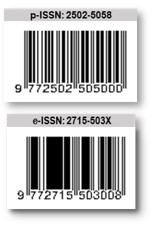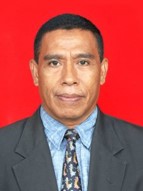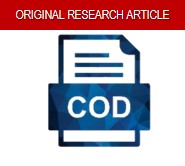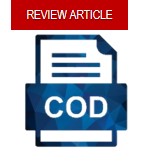Legal Gaps in Waste Management Regulation of Indonesia’s Fashion Industry
DOI:
https://doi.org/10.46924/jihk.v7i1.299Keywords:
Fashion Industry, Environmental Law, Extended Producer Responsibility, Sustainable RegulationAbstract
The fashion industry is among the sectors with significant potential to cause environmental pollution, particularly through liquid waste discharge, carbon emissions, and microplastic contamination. Despite these risks, Indonesia’s existing legal framework remains general in nature and lacks specific provisions addressing the environmental impacts of the fashion sector. This study aims to analyze both national and international legal frameworks concerning the environmental health implications of the fashion industry, identify normative and implemented weaknesses in current regulations, and assess the potential for harmonization with international legal principles and sustainability approaches, such as Extended Producer Responsibility (EPR). Employing normative juridical methods and a comparative legal approach, the study finds that Indonesia’s national regulations have yet to effectively address the distinct characteristics and environmental risks associated with the fashion industry. The study concludes by underscoring the urgent need for the development of responsive sector-specific regulations, the reinforcement of supervisory and enforcement mechanisms, and the integration of international principles to promote an environmentally sustainable fashion industry.
Downloads
References
Journals
Albab, Wildan Ulul, Adinda Rabiki Mardiah, Gita Ranjani, Gladys Donna Karina, and Masna Nuros Safitri. “Pengaruh Industri Fast Fashion Terhadap Pencemaran Lingkungan Dan Penurunan Keadilan Antar Generasi.” Indonesian Journal of Criminal Law and Criminology 5, no. 3 (2024): 94–103. https://doi.org/10.18196/ijclc.v5i3.22830.
Aponte, Nadia Olivar, Jesús Hernández Gómez, Vianey Torres Argüelles, and Eric D. Smith. “Fast Fashion Consumption and Its Environmental Impact: A Literature Review.” Sustainability: Science, Practice and Policy 20, no. 1 (2024): 1–24. https://doi.org/10.1080/15487733.2024.2381871.
Bailey, Kerrice, Aman Basu, and Sapna Sharma. “The Environmental Impacts of Fast Fashion on Water Quality: A Systematic Review.” Water 14 (2022): 1–11. https://doi.org/10.3390/w14071073.
Gunawan, Aditya Ilham, and Renata Anisa. “Kegiatan Media Monitoring Humas Pemerintah Kota Cimahi.” Ekspresi Dan Persepsi: Jurnal Ilmu Komunikasi 3, no. 2 (2020): 122–31. https://doi.org/10.33822/jep.v3i2.1758.
Hannan, Ishaq Abdul, Shabrina Eka Witrie, and Nugroho Prasetya Adi. “Dampak Pencemaran Air Akibat Limbah Industri Batik Printing Di Kecamatan Pekalongan Utara Terhadap Kualitas Air Sungai.” Gudang Jurnal Multidisiplin Ilmu 2, no. 8 (2024): 34–42. https://doi.org/10.59435/gjmi.v2i8.774.
Hansa, Raudina Adzani. “Manfaat Dan Peluang Perjanjian IA-CEPA (Indonesia-Australia Comprehensive Economic Partnership Agreement) Dan Dampaknya Terhadap Ekspor Impor Indonesia-Australia.” Jurnal Ilmiah Wahana Pendidikan 10, no. 22 (2024): 1114–28. https://jurnal.peneliti.net/index.php/JIWP/article/view/8692.
Juliyanto, Dwi, and Amrie Firmansyah. “Menuju Sustainable Fashion: Rencana Aksi Untuk Mengatasi Dampak Negatif Fast Fashion.” Journal of Law, Administration, and Social Science 4, no. 3 (2024): 352–62. https://doi.org/10.54957/jolas.v4i3.669.
Marwah, Rieza Ayu, Supriharyono Supriharyono, and Haeruddin Haeruddin. “Analisis Konsentrasi Kadmium (Cd) Dan Timbal (Pb) Pada Air Dan Ikan Dari Perairan Sungai Wakak Kendal.” Diponegoro Journal of Maquares 4, no. 3 (2015): 37–41. https://doi.org/10.14710/marj.v4i3.9207.
Mu’adib, Solikul, and Ichwal Subagyo. “Tinjauan Hukum Terhadap Pencemaran Sungai Akibat Limbah Rumah Tangga Di Desa Ngunjung Kecamatan Malo Kabupaten Bojonegoro.” Justitiable: Jurnal Hukum 6, no. 2 (2024): 30–53. https://doi.org/10.56071/justitiable.v6i2.814.
Ripaldi, Rizky, and Abdul Fatah. “Fenomena Fast Fashion Dan Dampaknya Terhadap Lingkungan: Kajian Dengan Pendekatan TafsirInterdisipliner.” Ta’wiluna: Jurnal Ilmu Al-Qur’an,Tafsirdan Pemikiran Islam 5, no. 3 (2024): 483–95. https://doi.org/10.58401/takwiluna.v5i3.1712.
Tolentino-Zondervan, Frazen, and Lori DiVito. “Sustainability Performance of Dutch Firms and the Role of Digitalization: The Case of Textile and Apparel Industry.” Journal of Cleaner Production 459 (2024): 142573. https://doi.org/10.1016/j.jclepro.2024.142573.
Widiatmoko, Satria Ariayudha, Adinda Thalia Zahra, and Khalisha Nasywa Permana. “Penerapan Konsep Zero Waste Dalam Perspektif Hukum Lingkungan: Tantangan Dan Prospek Masa Depan Di Indonesia.” Hukum Inovatif: Jurnal Ilmu Hukum Sosial Dan Humaniora 1, no. 3 (2024): 307–20. https://doi.org/10.62383/humif.v1i3.390.
Zahtamal, Zahtamal, Ridha Restila, Tuti Restuastuti, Yuni Eka Anggraini, and Yusdiana Yusdiana. “Analisis Hubungan Sanitasi Lingkungan Terhadap Keluhan Penyakit Kulit.” Jurnal Kesehatan Lingkungan Indonesia 21, no. 1 (2022): 9–17. https://doi.org/10.14710/jkli.21.1.9-17.
Proceedings
Krulinasari, Widya, and Yudi Yusnandi. “Tinjauan Limbah Kain Sisa Produksi Menurut Hukum Internasional Dan Hukum Nasional.” In Prosiding Seminar Nasional Penelitian Dan Pengabdian Kepada Masyarakat, 2:57–64, 2021. https://doi.org/10.24967/psn.v2i1.1481.
Books
Das, Surajit, Ritu Raj, Neelam Mangwani, Hirak R. Dash, and Jaya Chakraborty. “Heavy Metals and Hydrocarbons: Adverse Effects and Mechanism of Toxicity.” In Microbial Biodegradation and Bioremediation, edited by Surajit Das, 23–54. Amsterdam: Elsevier Inc., 2014. https://doi.org/10.1016/B978-0-12-800021-2.00002-9.
Reports
Badan Pusat Statistik Republik Indonesia. “Ekspor Pakaian Jadi (Konveksi) Dari Tekstil Menurut Negara Tujuan Utama, 2012-2023.” Jakarta, 2024. https://www.bps.go.id/id/statistics-table/1/MjAyNiMx/ekspor-pakaian-jadi-konveksi-dari-tekstil-menurut-negara-tujuan-utama-2012-2023.html.
Ellen MacArthur Fondation. “A New Textiles Economy: Redesigning Fashion’s Future.” Ellen MacArthur Fondation, 2017. https://www.ellenmacarthurfoundation.org/a-new-textiles-economy.
Sustainable Brand Platform. “The EU Strategy for Sustainable and Circular Textiles.” Sustainable Brand Platform, 2022. https://www.sustainablebrandplatform.com/articles/the-eu-strategy-for-sustainable-textiles.
The Secretariat of the United Nations Conference on Trade and Development. “Trade and Development Report 2021: From Recovery to Resilience: The Development Dimension.” New York, 2021. https://unctad.org/system/files/official-document/tdr2021_en.pdf.
The United Nations. “UNEP and UN Climate Change Provide Fashion Communicators with Practical Guide to Contribute to Sustainable Change.” The United Nations Environment Programme, 2023. https://www.unep.org/news-and-stories/press-release/unep-and-un-climate-change-provide-fashion-communicators-practical.
United Nations Children’s Fund. “Megatrends in South Asia: A Report by The Economist Intelligence Unit for UNICEF ROSA 28 February 2020.” New York, 2016. https://www.unicef.org/rosa/media/9546/file/MEGATRENDS IN SOUTH ASIA: A report by The Economist Intelligence Unit for UNICEF ROSA.pdf.
United Nations Environment Programme. “Sustainable Fashion: Communication Strategy 2021-2024.” Nairobi, 2022. https://www.unep.org/resources/publication/sustainable-fashion-communication-strategy-2021-2024.
Downloads
Published
Issue
Section
License
Copyright (c) 2025 Achmad Ghufroni, Femmy Silaswaty, Dika Yudanto

This work is licensed under a Creative Commons Attribution 4.0 International License.
Authors who publish with this journal agree to the following terms:
- Copyright on any article is retained by the author(s).
- The author grants the journal, the right of first publication with the work simultaneously licensed under a Creative Commons Attribution License that allows others to share the work with an acknowledgment of the work’s authorship and initial publication in this journal.
- Authors are able to enter into separate, additional contractual arrangements for the non-exclusive distribution of the journal’s published version of the work (e.g., post it to an institutional repository or publish it in a book), with an acknowledgment of its initial publication in this journal.
- Authors are permitted and encouraged to post their work online (e.g., in institutional repositories or on their website) prior to and during the submission process, as it can lead to productive exchanges, as well as earlier and greater citation of published work.
- The article and any associated published material is distributed under the Creative Commons Attribution 4.0 International License



 Sinta ID:
Sinta ID: 


















